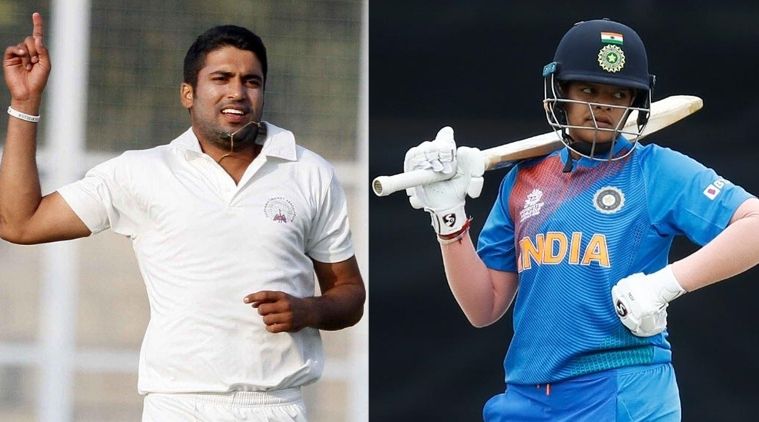Shared News| February 28, 2020 9:59:03 am
Shafali Verma won her second Player of the Tournament award in Melbourne on Thursday
A couple of years ago, Shafali Verma, just 14 then, was asked to face Haryana’s Ranji team pacer Ashish Hooda at Rohtak’s Shri Ram Narain Cricket academy. Coach Ashwani Kumar wanted to test his star student against top-class bowling. But, worried that the girl might get hit, Hooda came up with an an easy, slow ball. Shafali stepped out and smashed it back over his head. Hooda’s next ball was close to 130 kph but even that posed no problem.
“I knew then this little girl has it in her to do really well at the T20 World Cup,” says Hooda, who has opened the attack in over 50 first-class games.
On Thursday in Melbourne, Shafali won her second Player of the Match award in three games at the women’s T20 World Cup. Her 34-ball 46 against New Zealand took India to their third win in three games — and the semi-final.
So much so, that former cricketers in the commentary box were blown away by the 16-year-old who has been raining sixes. “This girl can seriously play,” former England captain Naseer Hussain tweeted.
Former India captain Diana Edulji says, “Shafali is a player who will draw a crowd to watch the women’s game. It’s not good to compare but she reminds me of Virender Sehwag. The attacking approach brings freshness to women’s cricket.”
For long, the women’s game hasn’t been known to throw up big-hitters but Shafali, with eight sixes in three games, is changing that. After just 17 T20 internationals, she has a career strike-rate of 148, the best in the world.

Ashish Hooda is a part of the Haryana Ranji team.
Hooda, 30, still remembers that first “gentle” ball. “After that, the coach told me ‘Kya kar raha hai, jaan laga ke bowl kar’ (What are you doing, bowl with some life). She seemed to have more time than others to play her shots. To think that she was only 14 back then, and the manner in which she was stepping out and hitting me, was mind-boggling,” Hooda says.
Coach Ashwani recalls the early days of the daughter of a small-time Rohtak goldsmith, Sanjeev Verma who was obsessed with making his daughter a world-class cricketer. Since the time she was five, the father, at the break of dawn, would wake Shafali up. Then, Sanjeev, his daughter and son Sahil would be on the bike searching for empty roads, parks or parking lots to play cricket.
Once, when an ill Sahil couldn’t make it to an all-boys tournament, Sanjeev asked Shafali to cut her hair short so she could pass off as her brother. That proved to be a turning point as Shafali outsmarted every boy on the field to finish as Player of the Tournament.
The next step: Ashwani’s academy. “At first, I asked her to face girls of her age on our concrete pitch. Such was her hitting that at one point, I got worried that she would injure some of the girls. In a couple of months, I shifted her to the turf wicket, where she faced boys between the ages of 15 and 18,” the coach says.
The experience of playing against first-class players has now come in handy. Her quick starts have seen India maintain an all-win record in Australia despite the team’s seasoned pros, captain Harmanpreet Kaur and Smriti Mandhana, not being among runs.
Mandhana, in fact, has acknowledged the contribution of the “baby of the team”. “I used to score a lot in the Power Play in the last two years. But now, Shafali is getting the runs in the way I do.”
Sanjeev says this is just the start. “She is in the team because she scored big in domestic cricket. Now, just see what she does if she lasts 10 or 15 overs. See how many she scores and how many the team finishes with. We have all worked very hard on her,” he says.
On Thursday, at the awards ceremony after the game, Shafali didn’t forget to mention all those who helped her become this T20 World Cup’s most talked-about cricketer: “I want to thank my dad and all the boys in my academy, who have helped me train well and improve my batting.”



